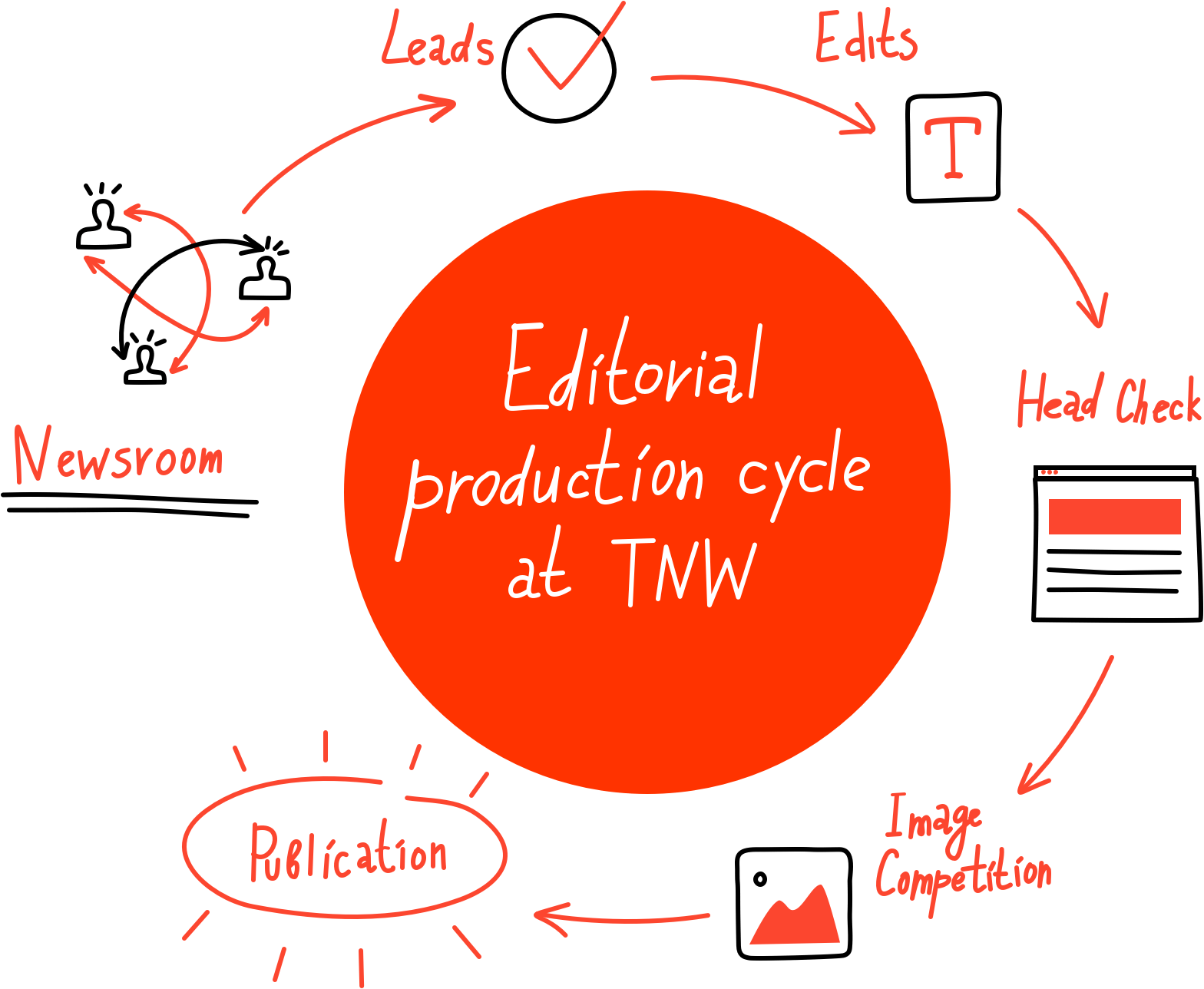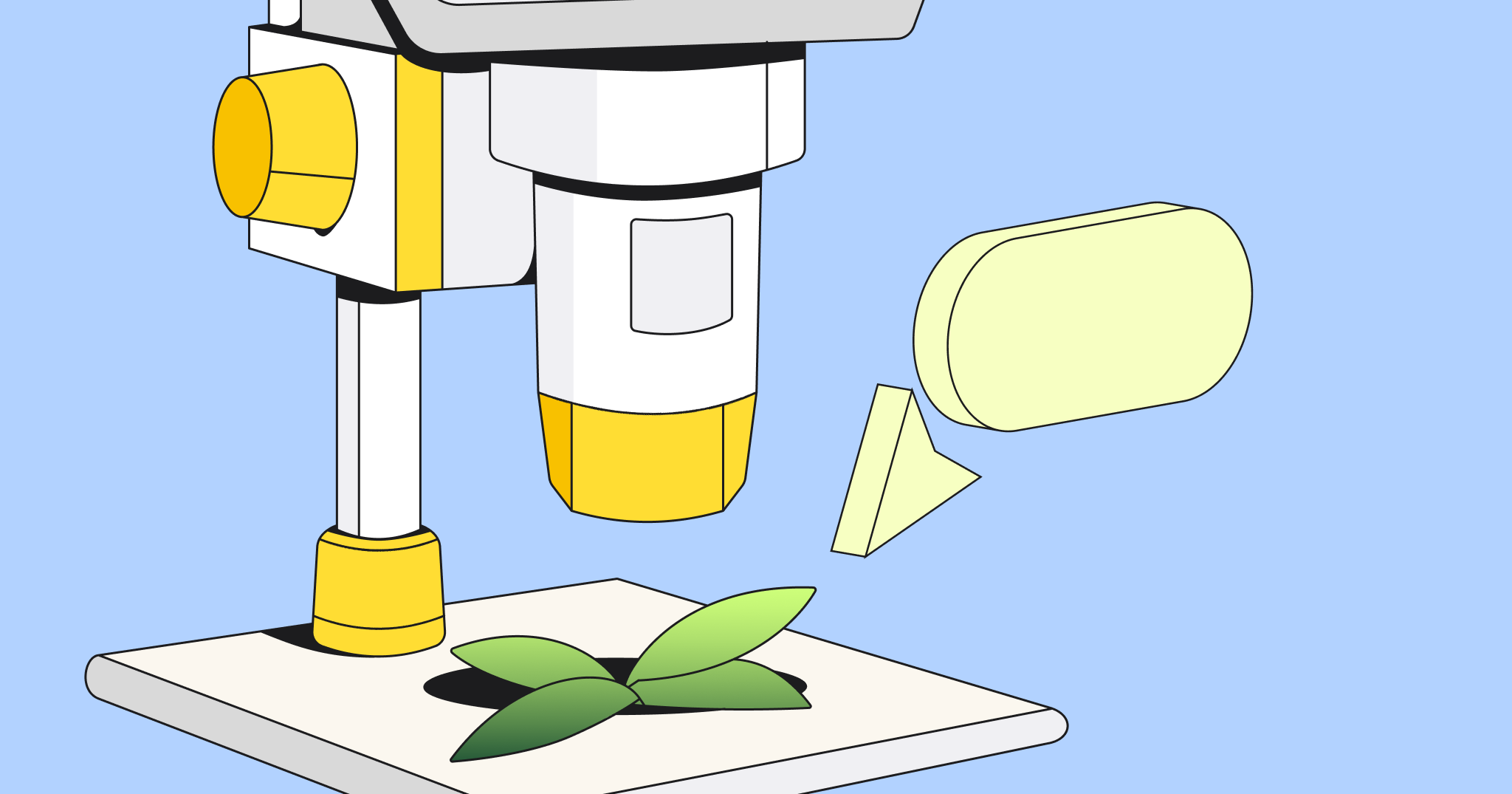Here at Miro, we’re creating a new way for companies to work together. Our modern whiteboarding tool makes visual collaboration and working in a remote team a breeze, empowering all kinds of businesses to achieve their goals. That’s why we’re naturally curious about how the world’s leading companies deal with remote collaboration and the challenges of working in distributed teams.
The Next Web is one of the world’s largest technology websites. For millions of weekly visitors, it has become a trusted source for news, inspiration and the occasional laugh. Behind the scenes, there are hard-working writers tasked with creating quality content around the clock. We sat down with editor-in-chief Alejandro Tauber to talk about how he manages a distributed team working from a digital newsroom. CEO and co-founder Boris Veldhuijzen van Zanten chimes in to explain the history of the company and why its culture is unique.
Value and trust your employees
When Alejandro joined the company in early 2017, he had just spent 3.5 years at Vice, where he headed up the Dutch edition of Motherboard. As a fresh hire, he hadn’t met anyone on the team he was about to manage. “It took some time to get to know everyone, and I really wanted to understand their ambitions and talents,” he says, which makes sense as he starts explaining his editorial vision.
TNW has a relatively small team when considering the reach of its platform. It only employs 20 full-time writers and 15 freelance contributors, numbers that pale when compared to venture-backed competitors like The Verge, whose team consists of hundreds of people. Looking for a way to stand out from the competition and encourage original reporting, Alejandro started giving his team a lot more freedom to decide what they wanted to write about. “When someone is interested in cryptocurrency, they should write about it. Their excitement ends up being apparent to the reader, which makes for a better piece,” Alejandro says. Large media organizations like TechCrunch rely on so many writers that they can only be managed with a complex system of editors and sub-editors. TNW’s more personal way of working better fits a smaller team.
A big part of effectively working together as a distributed team is the weekly editorial meeting, when the entire team calls in to run through the editorial calendar, share ideas for new stories, discuss readership statistics and talk about any issues anyone might have. This is hugely beneficial for team bonding, because everyone gets a chance to share anything that’s on their mind, while seeing their co-workers’ faces and hearing their voices.
Everyone’s opinion is equally important, regardless of where they’re working from, making remote employees feel appreciated and in touch with the team.
Boris explains that valuing employees is one of the key characteristics of the company, referring to the two things he says to every new writer: 1) it’s easier to ask for forgiveness than permission; and 2) he looks forward to apologizing on their behalf. These things give them a sense of comfort and confidence; they know they won’t be reprimanded when things don’t work out. “Giving people responsibility makes them much more aware of what they can and can’t do. It empowers them to make the best decisions, instead of trying to sell it to their manager.”
Profile
The Next Web is an international media company sharing stories and insights from the world of technology through its website, conferences and physical workspace.
Headquarters: Amsterdam, The Netherlands
Founded: 2007
TEAM: 80 people
Founders: Boris Veldhuijzen van Zanten, Patrick de Laive
AUDIENCE: 8+ million unique visitors per month
Having fun is one of the few obligations you have as an employee at TNW
According to Alejandro, the internet provides a plethora of tools that make it easier to work together while being apart. When he finally got to meet the remote team members, something interesting happened. “It was great to finally see each other, but our interactions didn’t change. They were all pretty much the same in-person as they are on Slack, and it instantly clicked in real life, too. That’s incredible to me – the fact that you can really build a personal connection over the internet.”
Naturally, there are some challenges in giving a remote team so much freedom. How do you know if people are being productive, for example? There’s a Status channel on Slack, where the team clocks in with a quick message when they get to work and clocks out when the day is over, creating a quick overview of who’s available at any point in time. Otherwise, there isn’t an institutionalized way of keeping track of working hours. Alejandro trusts his team, and instead of forcing his authority onto people, he gives them the space they need to thrive, while also being there if something goes wrong.
When someone doesn’t feel great or has personal problems, he sets up recurring calls to talk to them until they feel better about working again. “Ultimately, I think that’s why I have the respect of my team – because I’m flexible, and I’m willing to take responsibility for how they feel.”
Set up a stable foundation for collaboration
Even though the company is headquartered in Amsterdam, traffic to TNW doesn’t slow down when the sun sets in the Netherlands. With 50%–70% of its visitors coming from the US and the rest scattered all across the world, publishing the TNW website has grown into a truly global effort. In order to keep up with the 24-hour news cycle and readers’ never-ending demand for fresh content, a structured system is a necessity, especially when working in a remote team. When Alejandro joined, that’s not exactly what he found. “It turned out to be one of the first things I changed,” he explains.
As the site’s first blogger, Boris first wrote about what personally intrigued or entertained him. There were no partners to impress or people he was afraid of insulting, so he could do whatever he wanted. Today, the site has a much more clearly defined editorial focus, giving the platform its own identifiable tone of voice. “In the beginning, we were really searching for what we wanted to be. Now our articles stand out,” Boris adds.
Today, editorial production works like a well-oiled machine. There’s a Slack channel for every stage of the production pipeline. Stories always start off in the Newsroom channel, where writers share ideas and also joke around from time to time. The ambience closely resembles that of a physical office. The angle of the story is then discussed in the Leads channel, after which the piece is written. When it’s almost done, it’s posted in the Edits channel, where another team member edits it and everyone can leave feedback. The entire team then works together to come up with a striking title in the Head Check channel, and finally a hero image is created in the Image Competition channel.
There are so many interesting stories in places you wouldn’t expect, and they’re. currently being ignored
A short history of TNW
2006
Boris Veldhuijzen van Zanten and Patrick de Laive were looking for a place to present their new startup to the world, but they couldn’t find a suitable tech conference. Instead of waiting around, they decided to host their own, and TNW Conference was born.
2008
The TNW website is introduced as a spin-off of the event. Starting off as a side project by the two founders and one editor, it quickly grew into one of the world’s most influential technology blogs, now with millions of visitors every month.
2014
The company launches PR.co, a digital public relations toolkit, which have turned into profitable business itself
2015
Index, a business intelligence platform, is born.
2016
The company teams up with Google to launch TQ, a tech hub in the center of Amsterdam that serves as a home for fast-growing startups, solidifying TNW’s mission to empower entrepreneurs and champion new technology in both the digital and physical worlds.
The Image Competition channel is where the team comes up with creative ways to visualize the story. They have to do it themselves because the company’s designers don’t have time to create an image for every article. While some writers supply their own photography, not everyone has the time or means to do so. The visual aspects of the story might end up looking a bit crude, but according to Alejandro, “Any image that tells a story is better than a nondescript stock photo.”
After all these steps are completed, the story is published using a customized version of Craft CMS, only for the process to start all over again. Depending on the length of a story and how many writers are online, it can take anywhere from 45 minutes to 3 hours to get a story published on the site. The entire process is supervised by Alejandro during European hours, and leadership is transferred to San Francisco-based editor Bryan Clark for the remainder of the day.
It sounds like an efficient routine, which raises the question, what other tools are used to power the team? “Slack is extremely important to us, but other than that we actually don’t use many other things.” In addition to Google Calendar and Gmail, the TNW team uses Trello to keep track of stories’ progress. For their recurring video meetings, the team uses Daily, which Alejandro isn’t entirely satisfied with, adding, “It’s 2018, and for some reason we still don’t have a video conferencing tool that works reliably.”
Harness the power of being remote
Especially for an editorial team, a distributed workforce does not always create an ideal working environment. One of the biggest challenges is not being able to see remote employees all the time, which can lead to some remote workers feeling disconnected from the tight-knit Amsterdam-based team. Alejandro counters this by continually checking up on everyone and making sure everyone joins the weekly editorial meeting.
At the same time, there are a lot of reasons why TNW needs a remote team in order to function. Most importantly, the site offers 24/7 coverage by spreading out its resources over various time zones.
With writers stationed in India, the Netherlands, the UK and both the east and west coasts of the US, there’s always someone online to publish the latest news. As a lot of tech news originates in the US, an India-based writer can make sure a story has been covered before the people in Europe even get to breakfast. This always-on approach has generated some unique stories, such as a deep dive into the shady world of online diamond trading and the exposure of a surprisingly positive piracy study that was covered up by the European Union.
Alejandro doesn’t just want to use the company’s remote character to run a daily news machine. He wants to rethink the way the company sources its content. “Most media companies focus too much on what’s happening in a small part of the world,” he says. “But there are so many interesting stories in places you wouldn’t expect, and they’re currently being ignored.”
15
The number of TNW outposts. The publication employs writers working from 7 countries.

This year, Alejandro is aiming to build an international network of publishers and reporters to cover hyperlocal news, sharing stories from people and places that haven’t had a voice in mainstream tech media before. It’s reminiscent of what TNW Conference tries to do by sharing stories from entrepreneurs and innovators from across the world. “Diversity at every level is important. It can make you see things from new perspectives,” Boris adds. “And giving people in other countries a platform helps a lot.”
Currently, the team is on the lookout for exciting publishers with a fresh perspective, reaching out to anyone they think would be a great fit with their mission. If both parties are interested, writers are invited to either trade content or deliver their articles to TNW, where they are posted with full accreditation to the source. By utilizing the power of TNW’s distributed way of working, these contributors can easily be added to the TNW newsroom, where the editors can help out with ideation, editing and publishing.
When asked what kind of stories readers can expect from this approach, Alejandro’s eyes light up. “It might be [about] a farmer in Poland who uses a Raspberry Pi to hack together a system that keeps his cows from escaping. Or how to build a startup in Romania, a country with little access to funds and talent. Those are the kinds of stories I want to tell. And we wouldn’t be able to do that without the internet.”




